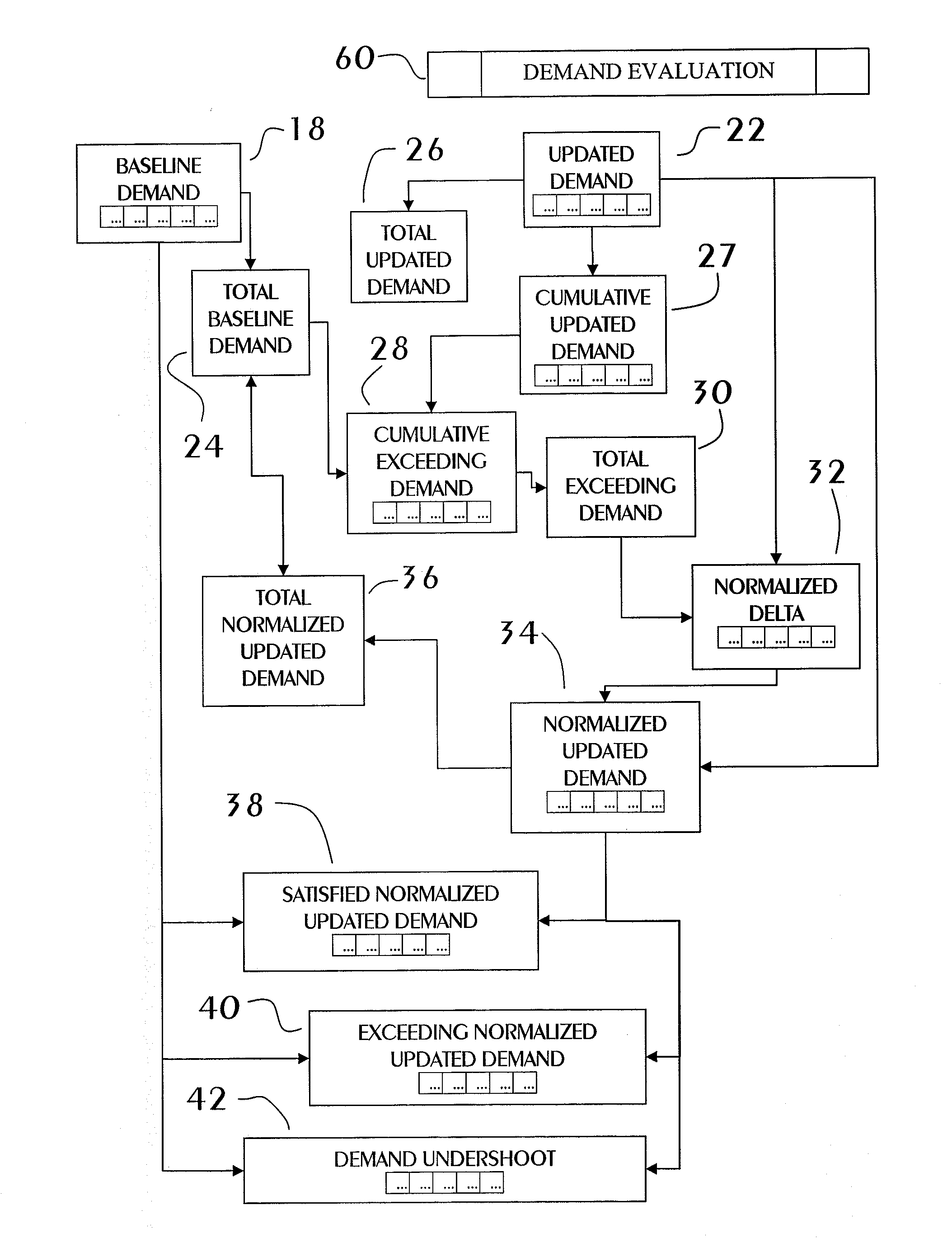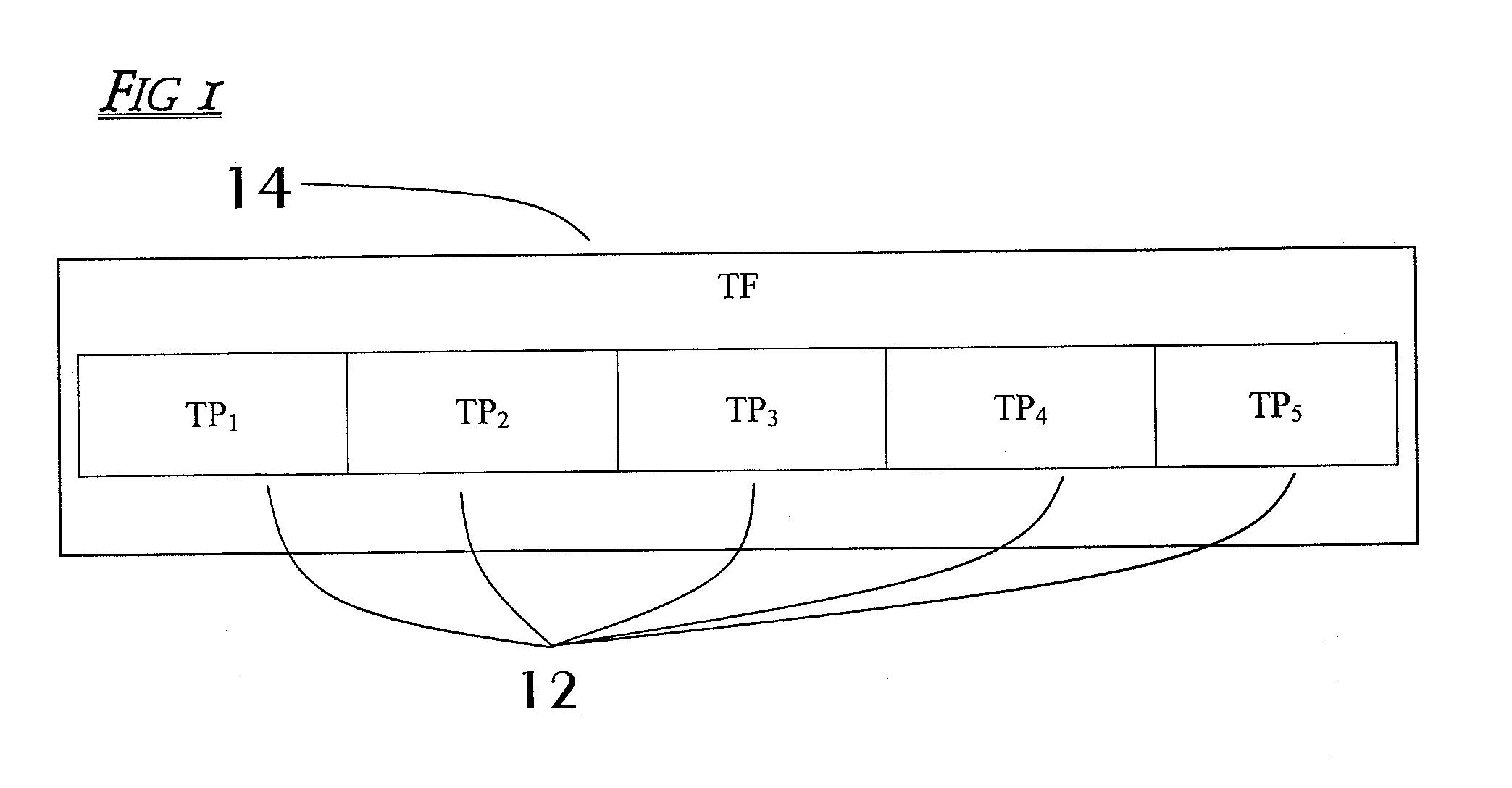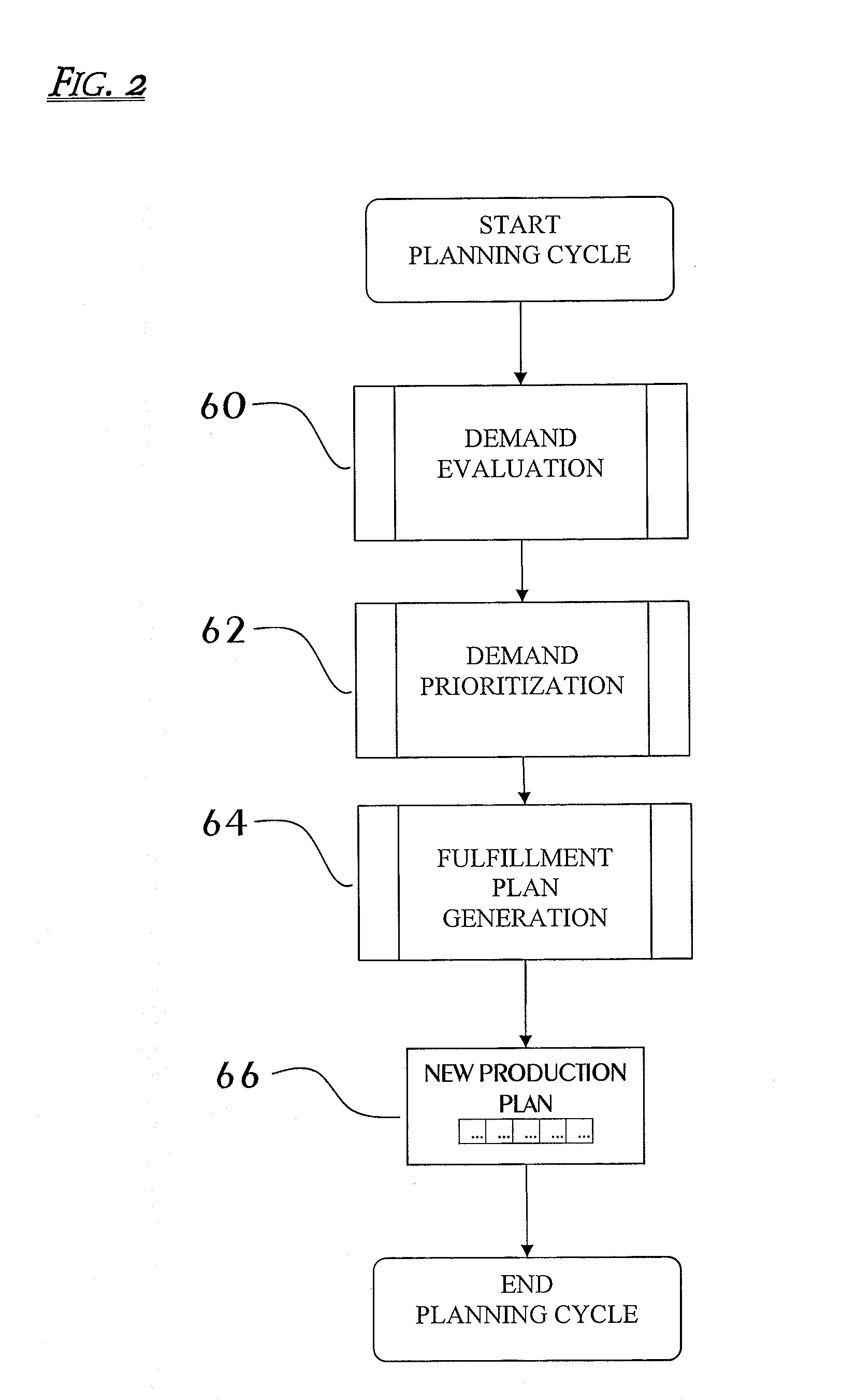Dynamic fulfillment planning method and apparatus
a fulfillment planning and dynamic technology, applied in the field of dynamic fulfillment planning methods and apparatuses, can solve the problems of rescheduling other customers' orders, affecting the profitability of customers or plants, and affecting the efficiency of planning systems, so as to achieve the effect of maximizing production efficiency, facilitating customer rescheduling, and facilitating customer rescheduling
- Summary
- Abstract
- Description
- Claims
- Application Information
AI Technical Summary
Benefits of technology
Problems solved by technology
Method used
Image
Examples
Embodiment Construction
[0028]The following description is merely exemplary in nature and is not intended to limit the present disclosure, application, or uses. It should be understood that throughout the drawings, corresponding reference numerals indicate like or corresponding parts and features.
[0029]The equations used in this description may contain traditional mathematical expressions or functions available in typical spreadsheet programs, such as certain versions of Microsoft Excel. It is understood by those skilled in the art that the equations disclosed may be easily modified or translated for implementation in other programs, apparatuses, or programming languages.
[0030]The following disclosure includes calculation steps separated into separate phases. It is understood by those skilled in the art that the calculation steps may be completed in any other order and with or without being separated into different phases, except where logic requires otherwise.
[0031]Referring to FIG. 1, in a fulfillment pr...
PUM
 Login to View More
Login to View More Abstract
Description
Claims
Application Information
 Login to View More
Login to View More - R&D
- Intellectual Property
- Life Sciences
- Materials
- Tech Scout
- Unparalleled Data Quality
- Higher Quality Content
- 60% Fewer Hallucinations
Browse by: Latest US Patents, China's latest patents, Technical Efficacy Thesaurus, Application Domain, Technology Topic, Popular Technical Reports.
© 2025 PatSnap. All rights reserved.Legal|Privacy policy|Modern Slavery Act Transparency Statement|Sitemap|About US| Contact US: help@patsnap.com



